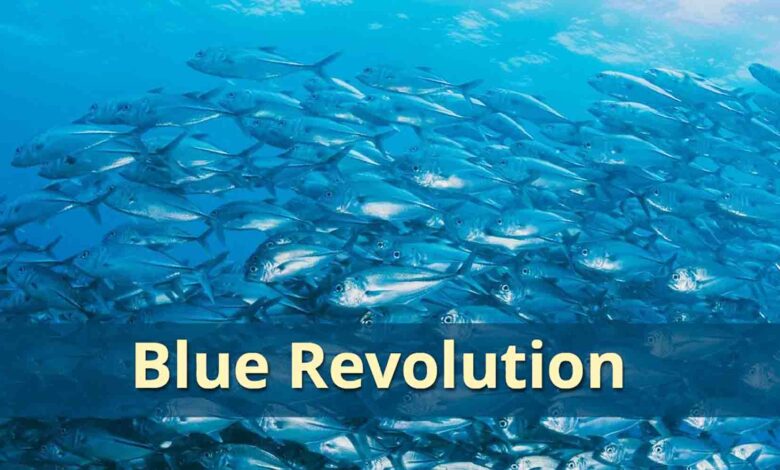Blue Revolution Will Become a Reality Only by Empowering Women

 Shaji Baby John
Shaji Baby John
Aquaculture—the farming of fish, shrimp, and aquatic plants—is rapidly transforming into one of India’s most promising sectors. With rising global demand, India is poised to become a major player in the Blue Economy. Yet, one critical element still remains underutilized: the power and participation of women.
Despite forming the backbone of rural and coastal economies, women have long been excluded from formal roles in aquaculture. Changing this is not just a matter of equity but is a prerequisite for sustainability and inclusive growth.
A workforce long in the shadows
Women have always played a role in fisheries—sorting, drying, marketing, and feeding fish—largely behind the scenes. These roles, however, have traditionally been informal, unpaid, and largely unrecognized.
Today, this narrative is changing. From Odisha and West Bengal to Tamil Nadu and Andhra Pradesh, women are taking ownership of aquaculture ponds, forming self-help groups (SHGs), and leading cooperatives. In the Sundarbans, women-run SHGs have turned crab fattening into a viable source of income. In Andhra Pradesh’s Nellore district, women managing ponds under the National Rural Livelihood Mission (NRLM) are delivering measurable economic and social outcomes.
A pathway to empowerment
Aquaculture offers a unique window of opportunity for women—especially those with limited access to land, capital, or formal education. Models like backyard fish ponds, aquaponics, and polyculture systems are ideal for home-based livelihoods. These allow women to balance household duties while generating income and ensuring nutritional security.
According to the National Fisheries Development Board (NFDB), trained women significantly improve feed efficiency, water management, and fish survival rates—enhancing productivity and profitability, especially for female-headed households.
Systemic barriers remain to be overcome
Despite growing participation, systemic challenges persist. Gender norms continue to limit women’s mobility, access to land, and financial autonomy. A 2022 study by the Central Institute of Fisheries Technology (CIFT) revealed that fewer than 15 per cent of women in fisheries have received formal training—and even fewer have access to institutional finance.
Most aquaculture technologies, extension services, and demonstrations are still targeted toward men. Digital exclusion, poor cold-chain access, and limited market linkages further restrict opportunities—particularly in remote regions.
Private sector as catalyst
Recognizing the need to democratize aquaculture, Kings Infra Ventures Ltd has launched two pioneering initiatives: SISTA360 and KMEPL (Kings Maritech Ecopark Limited)—both designed to bridge the gender gap in the sector.
SISTA360 is a digital-first platform that delivers real-time data, mobile-enabled advisory, and integrated farm management tools. Crucially, it is being tailored to empower women through simplified, gender-sensitive training modules, linking SHGs and women entrepreneurs directly with aquaculture experts and services.
KMEPL, on the other hand, is building physical infrastructure and ecosystems to support last-mile aquaculture entrepreneurship. Through micro-enterprise models spanning hatcheries, nurseries, feed supply, cold-chain logistics, and seafood retail, KMEPL enables women to move beyond production and into value-chain leadership. In Tamil Nadu and in other parts of the country. KMEPL has decided to reserve 30 per cent of its manpower requirements for women.
Policy synergy and state-led models
These private sector innovations align well with government programs such as the Pradhan Mantri Matsya Sampada Yojana (PMMSY), which emphasizes inclusive aquaculture development with gender-specific allocations.
State-level initiatives are also proving effective. In Tamil Nadu, the Department of Fisheries supports SHGs in ornamental fish culture and hatchery operations. Odisha’s Mission Shakti has integrated aquaculture into its women’s empowerment agenda, enabling thousands of women to become entrepreneurs. But greater synergy is needed—linking public policy, private innovation, and grassroots mobilization into a cohesive, scalable model.
What Must Happen Next
To fully unlock the potential of women in aquaculture, India must take bold steps:
• Develop gender-responsive training and extension programs
• Ensure easy access to microfinance and revolving credit
• Encourage the formation of women-led cooperatives and collectives
• Promote digital literacy and mobile-based farm advisory
• Guarantee representation of women in aquaculture governance bodies
• Community models that combine aquaculture with nutrition—like household ponds or school fish-meal programs—can further reinforce both food security and gender equity.
The Blue Revolution 2.0 needs women at the helm
India’s ambitions to become a global aquaculture powerhouse cannot succeed without the full participation of its women. Their inclusion is not just an ethical imperative—it is an economic necessity.
By putting women at the centre of the aquaculture story, and by building smart, inclusive platforms like SISTA360 and KMEPL, Kings Infra is demonstrating that sustainable growth is inseparable from gender equity. From village ponds to policy boardrooms, the future of aquaculture in India must be both blue and inclusive.
(The author is chairman and managing director of Kings Infra Ventures Limited; views are personal)






